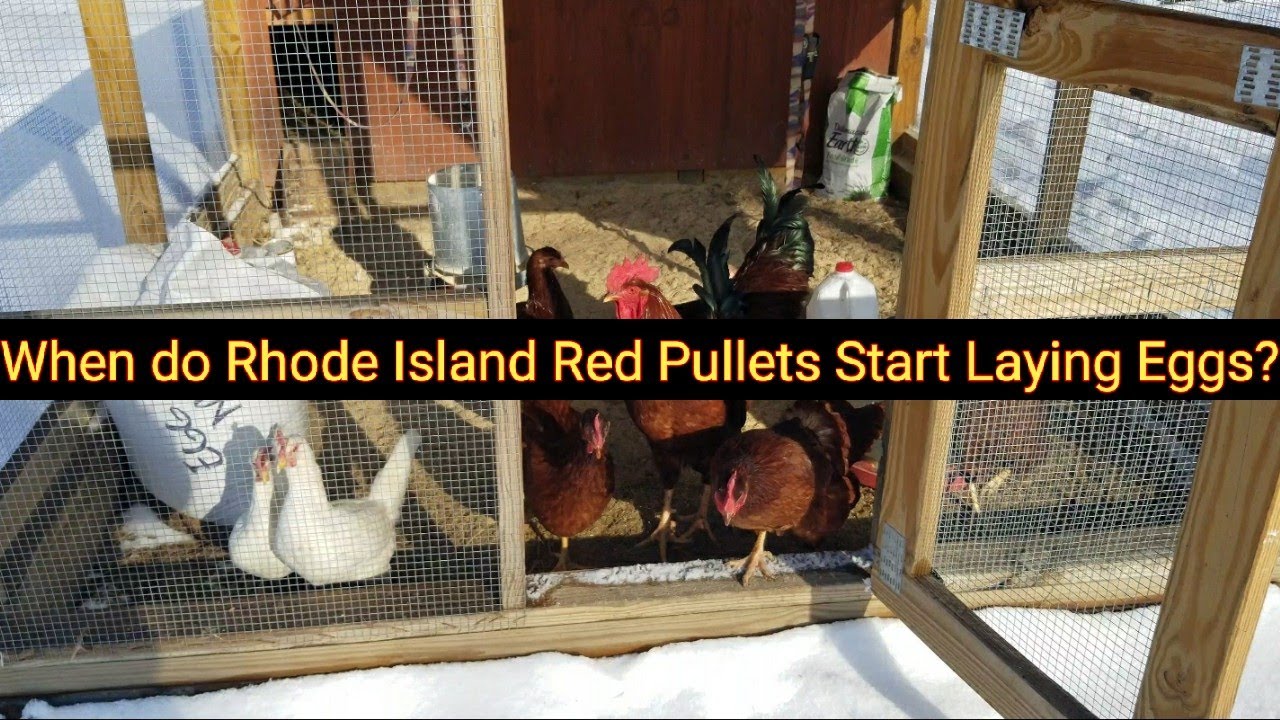When Do Rhode Island Reds Start Laying Eggs?
Rhode Island Reds, a popular breed of chicken known for their hardiness and excellent egg-laying abilities, usually begin laying eggs at a specific stage in their development. Determining when these birds will start producing eggs is crucial for poultry farmers and backyard chicken enthusiasts alike. In this article, we will explore the various aspects of Rhode Island Red’s egg-laying cycle, including the factors influencing the onset of egg production, the average age they start laying, early signs indicating they are ready to lay, and how to encourage and monitor their egg-laying development.
Understanding the Laying Cycle of Rhode Island Reds
Rhode Island Reds, like other chicken breeds, go through a distinct process known as the laying cycle. This cycle consists of several stages, including the pullet stage, the onset of egg production, peak laying period, and eventual decline. Understanding this cycle is essential for successfully managing a flock of Rhode Island Reds and maximizing their egg production potential.
Factors Influencing the Onset of Egg Production
Several factors can influence the onset of egg production in Rhode Island Reds. Genetics play a significant role, with specific strains of Rhode Island Reds being bred for early maturity and quicker onset of laying. Other factors include the overall health of the birds, external environmental conditions, nutrition, and lighting conditions. These factors must be carefully managed to ensure Rhode Island Reds start laying eggs at the desired time.
The Average Age Rhode Island Reds Start Laying
On average, Rhode Island Reds start laying eggs between 4.5 and 6 months of age. However, there can be some variation among individual birds. Some may start as early as 4 months, while others may take slightly longer. It is important to note that the age at which Rhode Island Reds begin laying can also be influenced by factors such as breed selection, diet, and management practices.
Early Signs Indicating Rhode Island Reds Are Ready to Lay
There are several early signs that indicate when Rhode Island Reds are ready to start laying eggs. One of the most prominent signs is the development of a bright red comb and wattles. Additionally, the pelvic bones of the hen will become more flexible as she prepares for egg-laying. Another sign is the appearance of a distinctive squatting behavior, where the hen crouches low to the ground when approached. These signs, when observed, indicate that the hen is reaching sexual maturity and will start laying eggs soon.
Importance of Proper Nutrition for Early Laying
Providing Rhode Island Reds with a balanced and nutrient-rich diet is crucial for their early laying development. During this stage, hens require higher levels of protein and calcium to support the production of quality eggs and maintain their overall health. Feeding them with a specifically formulated layer feed that contains optimal levels of these nutrients is highly recommended. Additionally, offering supplemental calcium sources, such as crushed oyster shells, can help prevent calcium deficiencies and strengthen eggshells.
Creating an Optimal Environment for Egg Production
To encourage early egg production, it is essential to create an optimal environment for Rhode Island Reds. Providing a clean and comfortable nesting area with suitable bedding material, such as straw or wood shavings, is crucial. Ensuring proper ventilation and lighting conditions, especially during the winter months, can also help stimulate egg production. Adequate space for the birds to move around and engage in natural behaviors is necessary for their overall well-being and egg-laying success.
Common Challenges in the Early Laying Period
The early laying period for Rhode Island Reds can present some challenges for poultry farmers and backyard chicken keepers. One common challenge is the presence of stressors, such as changes in the flock’s environment or the introduction of new birds, which can disrupt the laying cycle. Additionally, diseases and parasites can negatively impact egg production. Regular health checks, vaccination protocols, and proper biosecurity measures are essential to prevent and manage these challenges effectively.
How to Encourage Rhode Island Reds to Start Laying
Encouraging Rhode Island Reds to start laying eggs can be achieved through several strategies. Ensuring a consistent and balanced diet, as well as offering plenty of fresh water, is crucial. Maintaining optimal lighting conditions, with at least 14 hours of light per day, can simulate longer daylight hours and encourage egg production. Providing appropriate nesting boxes with comfortable bedding material and privacy can also encourage hens to lay their eggs.
Monitoring and Tracking Egg Laying Development
Monitoring and tracking the egg-laying development of Rhode Island Reds is vital for flock management. Keeping a record of each hen’s laying patterns, including the date of the first egg, can help identify any abnormalities or deviations from the expected timeline. Regularly checking the nesting boxes for newly laid eggs and observing the overall health and behavior of the hens can provide valuable insights into their egg-laying progress.
Troubleshooting Delayed or Absent Egg Laying
In some cases, Rhode Island Reds may experience delayed or absent egg laying. If hens are not laying eggs within the expected timeframe, it is essential to evaluate potential causes and take appropriate action. Possible reasons for delayed or absent egg laying include inadequate nutrition, stress, disease, or inadequate lighting conditions. Consulting with a poultry specialist or veterinarian can help diagnose and address these issues effectively.
Celebrating the First Eggs from Rhode Island Reds
The first eggs laid by Rhode Island Reds are a moment of excitement and accomplishment for poultry enthusiasts. These eggs mark the beginning of a productive laying period, bringing joy and satisfaction to chicken keepers. Celebrate the first eggs by sharing the news with fellow enthusiasts, using them in delicious recipes, or simply enjoying the rewards of successful flock management. Remember, consistent care and attention throughout the early laying period will help ensure a steady supply of fresh and nutritious eggs from these remarkable birds.





